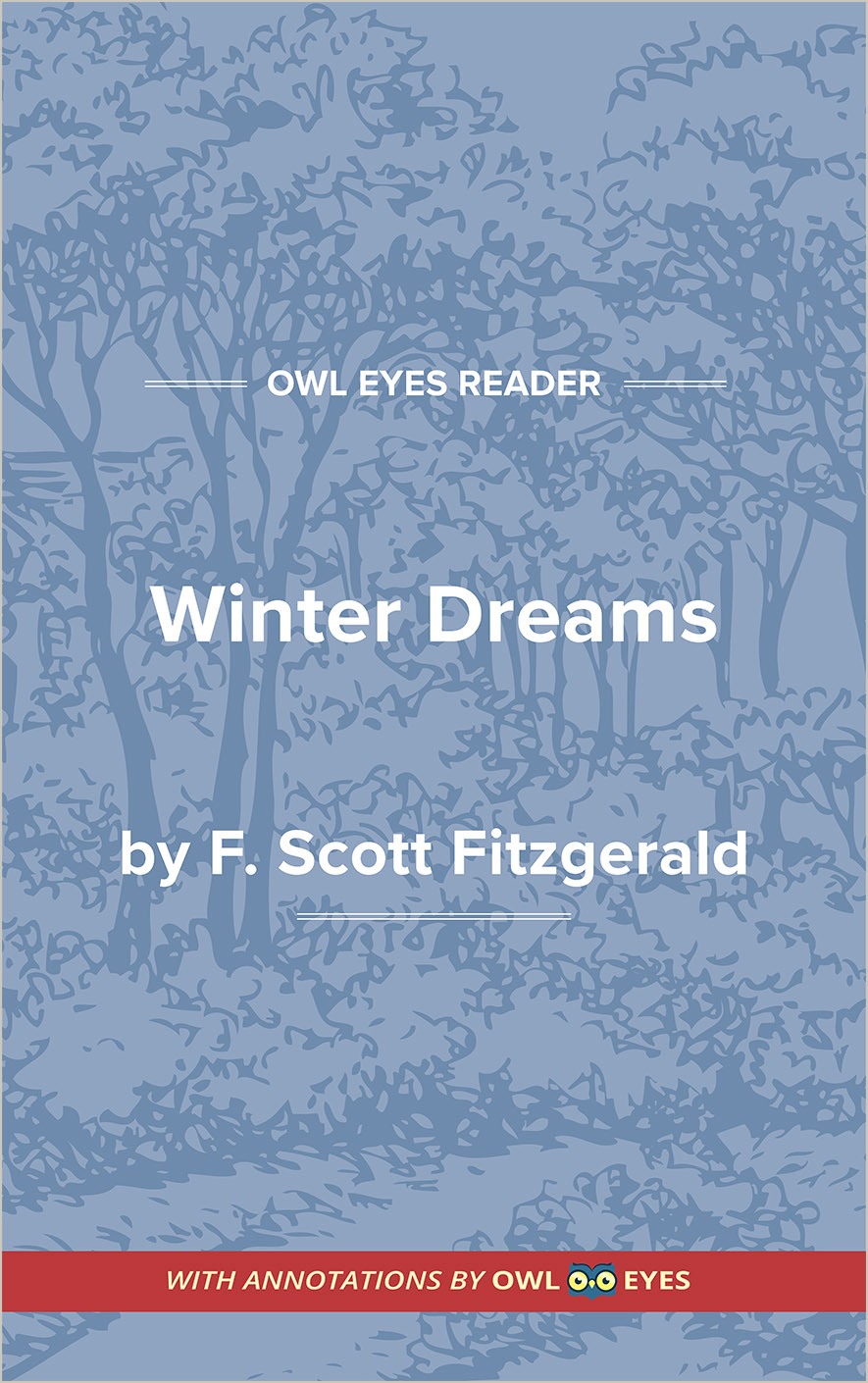Analysis Pages
Motif in Winter Dreams
Motif Examples in Winter Dreams:
Part I
🔒"a white linen nurse..." See in text (Part I)
Part II
🔒"pink rompers...." See in text (Part II)
"gold and varying blues and scarlets..." See in text (Part II)
Part III
🔒"the scarlet corners of her lips..." See in text (Part III)
"a blue silk afternoon dress,..." See in text (Part III)
"Yet in acknowledging to himself that he wished his children to be like them he was admitting that he was but the rough, strong stuff from which they eternally sprang..." See in text (Part III)
Part IV
🔒"The clink of glasses and the slap of hands on the bars issued from saloons, cloisters of glazed glass and dirty yellow light...." See in text (Part IV)
"Judy Jones, a slender enamelled doll in cloth of gold: gold in a band at her head, gold in two slipper points at her dress's hem...." See in text (Part IV)
Part VI
🔒"Devlin went he lay down on his lounge and looked out the window at the New York sky-line into which the sun was sinking in dull lovely shades of pink and gold...." See in text (Part VI)

